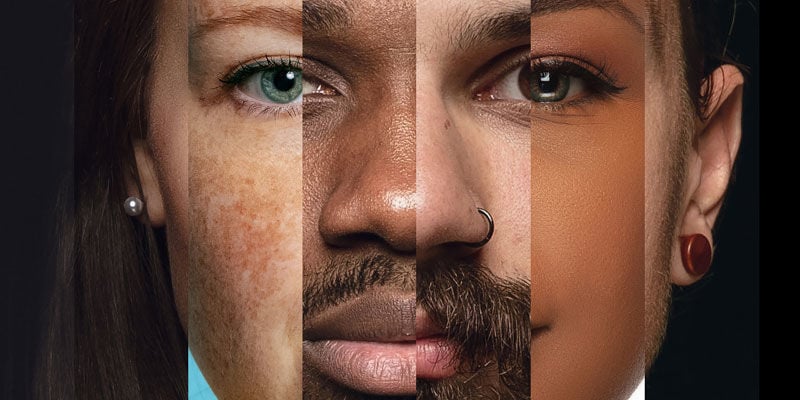
All About The Zinberg Model
The Zinberg model gives us a structure in which to understand an individual's drug use in relation to their environment, and how these factors inform one another. From this, we can better understand ourselves and others. Here we explore the ins and outs of the Zinberg drug use model.
We cannot adequately understand drug use, and certain drug experiences, unless we understand the relationship between an individual and their environment, and how this might inform our choices and experiences.
Though it’s been around for decades, the Zinberg model—which gives us the tools to understand this very interaction—is still hardly known, even within circles of drug users. So here, we explain this straightforward and illuminating psychological model, and discuss how it could be helpful in understanding one’s own substance use.
Who is Norman Zinberg?

Norman Earl Zinberg (1922–1989) was an influential and respected psychologist and psychoanalyst who greatly furthered and deepened Western psychology’s understanding of addiction. Clinical professor of psychiatry at Harvard Medical School and a psychiatrist at Cambridge Hospital—among other roles—he held a variety of prestigious positions throughout his career, and published a veritable trove of research that is still valuable today, the most notable of which is the book Drug, Set, and Setting: The Basis for Controlled Intoxicant Use.
How did he come up with his model?
Zinberg came up with his model by studying soldiers returning from the Vietnam War. He realised that their addictions, or substance dependencies, were not static, binary things that were either on or off, but were behaviours that responded to the individual’s environment.
He noticed that soldiers who showed all the signs of being dependent on heroin while fighting in Vietnam were, in the vast majority of cases, able to entirely cease their usage upon returning to the US. This did not fit contemporary understandings of addiction at the time, which posited that some people were more prone to addictions, and once addicted, those people would struggle to overcome said addiction.
What he observed showed, in fact, that problematic drug use appeared to be a response to a traumatic environment—the Vietnam War—and that once people were back in a safer environment, the drug use stopped. From this, he deduced that drug addiction was more than simply a biological process happening inside someone, but a dialogue between a person, an environment, and a drug, from which much could be gleaned about each individual part. From this, he created his model.
What is the Zinberg model?

The Zinberg model explores three factors: drug, individual, and context/environment.
This can also be distilled into the more commonly known “set and setting”, popularised by Timothy Leary, although there are differences between the two.
The Zinberg model proposes that an individual's drug use never happens in isolation. When we use drugs, it is not occurring in a bubble detached from our wider environment, but rather is informed by and informs said environment. All three of these elements come together to create a unique and transient drug experience, specific to any individual at any given time.
Let’s take a deeper look at the different aspects. It’s important to note that there is significant crossover between “individual” and “context”, so you may notice that one or more points could belong in either one.
Individual
An individual is the sum of countless attributes, all of which make up a unique lived experience—and all of which change an individual's interaction with the wider environment.
Some obvious individual characteristics are:
- Race
- Gender
- Religion
- Nationality
- Age
But there are many other relevant ones too, such as:
- Hormonal balance (which can regularly change)
- Childhood experiences
- Traumatic experiences
- Positive experiences
- Sexuality
- Economic status
- Education
- Likes and dislikes
- And everything else that makes up a person
Basically, when understanding your own or somebody else’s drug use, it cannot be properly understood without recognising the contributing role of all of the different aspects that make up an individual.
Context

Context, or environment, is all about the place an individual finds themselves. This could be social context, economic context, political context, and so on. Now, this is not the setting in which a person directly uses a drug, but the general environment in which they live. For instance, in Zinberg’s original research, we can see the pivotal role that the environment plays—while problematic heroin use was encouraged in the Vietnam War, back home in the US, this was not the case.
However, most of us do not find ourselves at war, and yet many still use drugs problematically. So relating to the lists above, context could include the following factors:
- Race: Whether a person lives in a racist society
- Gender: Whether a person lives in a sexist or transphobic society
- Religion: What religion a person grew up with/which religion is prevalent in the society where they live
- Age: How a person’s environment treats people of their age
- Sexuality: How different sexualities are treated/how different sexualities give rise to distinct cultures of drug use (e.g. chemsex)
- Economic status: How a society treats people of different economic status
As you can see, most individual aspects relate in some way to the wider context in which a person finds themselves, and these can have positive or negative effects, which can in turn influence drug use.
For instance, a person who finds themselves repressed in a racist society is more likely to use drugs in a problematic way compared to someone who does not. And someone who lives within a highly conservative religious society is less likely to use drugs, but is more likely to be secretive about it if they do. There are infinite, nuanced interactions between individuals and environments, all of which can influence drug use and experiences.
Drug

To complete this model, we need to address drugs themselves. These are less nebulous than the other two factors and are easier to define and understand, which goes some way to explain why many contemporary psychiatric models still focus almost exclusively on drugs and reductive biology, rather than taking a more comprehensive approach.
When an individual in a context takes a drug, this is a drug experience. This drug could be anything, taken for any reason. It could be a teenager smoking weed in a liberal society, or a repressed person using heroin in an attempt to self-medicate.
Drug experience
The key tenet of this model is that it recognises that different people in different contexts will respond differently to the same drug. This is the unique drug experience.
Using a very generalised example, a happy, healthy person with a great support network and a fulfilling life may take heroin and not develop a problematic relationship with it, whereas somebody else (a soldier in Vietnam, for instance) could be much more vulnerable.
Or, considering cannabis, one person might be able to remain healthy and moderate in their weed use, whereas another might exhibit adverse psychological effects, whether this is due to their age, mental health disorders, or something else.
Only by integrating all of these factors can we explain why people have such varied experiences using exactly the same drugs. Biology and chemistry imply that the same substances should have the same effects on brains and bodies that appear more or less the same—and yet it doesn’t take a genius to notice that this simply is not the case.
The Zinberg model gives us a coherent and somewhat simple way of understanding and explaining this.
How does the Zinberg model differ from set and setting?

Set and setting is like a more specific version of the Zinberg model. Where the Zinberg model takes a macro approach to an individual and their environment in order to understand how they might respond to drug experiences, set and setting seeks to understand and manage an individual drug experience.
“Set” in the context of the Zinberg model would look at a person’s mindset as a result of their entire life, whereas “set” as part of set and setting considers how a person is feeling in the moments before a drug experience. Likewise, “setting” for Zinberg would include the whole context in which a person lives, whereas for set and setting it simply refers to the environment in which the drug experience will take place.
Ultimately, the Zinberg model is a tool for understanding an individual's relationship to drugs, whereas set and setting is a tool for preparing for a drug experience.
The Zinberg model: Something to consider

Each of us, even if we don’t use drugs, could stand to gain something by considering how this model might apply to ourselves. What are our individual characteristics, how do they relate to our environment, and how might this interaction inform the way we use, or don't use, drugs.
Taking a step back to appraise our own drug use in such a way can be extremely useful in understanding how healthy or problematic it might be. It also helps to understand the context in which we are using drugs, as although we don’t always recognise the context in which we live, we can be sure that it plays an extremely powerful role in guiding our decision-making.
-
 5 min
31 March 2025
Is it possible to have a psychedelic experience on cannabis?
Cannabis can sometimes cause very intense highs, and these might feel trippy or even conjure up experiences that might feel like (or may even be) hallucinations. But can it cause a true psychedelic...
5 min
31 March 2025
Is it possible to have a psychedelic experience on cannabis?
Cannabis can sometimes cause very intense highs, and these might feel trippy or even conjure up experiences that might feel like (or may even be) hallucinations. But can it cause a true psychedelic...
-
 4 min
10 September 2024
10 Innovative Cannabis Companies You Need To Check Out In 2025
The cannabis world is evolving fast, and innovation and investment are booming. Here, we examine 10 new and novel cannabis companies to see how the contemporary world of weed is evolving.
4 min
10 September 2024
10 Innovative Cannabis Companies You Need To Check Out In 2025
The cannabis world is evolving fast, and innovation and investment are booming. Here, we examine 10 new and novel cannabis companies to see how the contemporary world of weed is evolving.
-
 3 min
15 October 2018
What Cannabis Does To Your Brain
Cannabis has a complex relationship with our bodies, and interacts with us in many ways. Here is exactly what it does to the brain.
3 min
15 October 2018
What Cannabis Does To Your Brain
Cannabis has a complex relationship with our bodies, and interacts with us in many ways. Here is exactly what it does to the brain.
-
 3 min
6 January 2017
Cannabis Culture: The History Of The Joint
Smoking cannabis has a long history. Now learn about of one of weed’s darlings, the joint.
3 min
6 January 2017
Cannabis Culture: The History Of The Joint
Smoking cannabis has a long history. Now learn about of one of weed’s darlings, the joint.













 United States
United States










